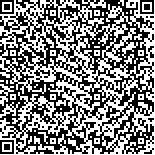王小刚,杨彬,王亚寒,等.悬吊运动训练对胸腰椎骨折伴脊髓损伤患者腰椎功能及平衡能力的影响[J].中华物理医学与康复杂志,2021,43(11):991-995
扫码阅读全文

|
| 悬吊运动训练对胸腰椎骨折伴脊髓损伤患者腰椎功能及平衡能力的影响 |
|
| |
| DOI:10.3760/cma.j.issn.0254-1424.2021.11.007 |
| 中文关键词: 胸腰椎骨折 脊髓损伤 悬吊运动训练 椎弓根螺钉复位内固定 平衡能力 |
| 英文关键词: Thoracolumbar fracture Spinal cord injury Suspension exercise Pedicle screw reduction Internal fixation Balance Walking |
| 基金项目: |
|
| 摘要点击次数: 4963 |
| 全文下载次数: 5617 |
| 中文摘要: |
| 目的 观察悬吊运动训练(SET)对胸腰椎骨折伴脊髓损伤患者术后腰椎功能及平衡能力的影响。方法 采用随机数字表法将64例胸腰椎骨折伴脊髓损伤患者分为观察组及对照组,每组32例。2组患者均接受椎弓根螺钉复位内固定及椎管穹隆状减压治疗,对照组术后给予常规康复干预,观察组在此基础上辅以SET训练(包括双桥式训练、骨盆上抬训练及单腿悬挂训练等)。于术后3 d时、训练2个月后对2组患者步行功能、脊髓神经功能及平衡功能进行评定,具体评定指标包括步频、跨步长、步速、美国脊柱损伤协会(ASIA)神经功能分级、重心轨迹长、重心轨迹包绕面积及重心移动偏差等。 结果 训练后观察组患者步频[(1.01±0.23)步/秒]、跨步长[(0.60±0.19)m]、步速[(0.38±0.13)m/s]、ASIA神经功能分级D级占比(65.63%)及重心轨迹长、包绕面积、重心移动X轴和Y轴偏差的Romberg率[分别为(1.40±0.18)、(1.45±0.22)、(1.00±0.10)及(0.98±0.22)]均较训练前及对照组明显改善,差异均具有统计学意义(P<0.05)。 结论 于椎弓根螺钉复位内固定术后辅以SET训练,能显著改善胸腰椎骨折伴不完全性脊髓损伤患者脊髓神经功能,增强患者平衡功能及步行能力,该联合疗法值得临床推广、应用。 |
| 英文摘要: |
| Objective To explore the effect of suspension exercise training (SET) on the lumbar function and balance ability of patients with thoracolumbar fracture and spinal cord injury. Methods Totally 64 patients with thoracolumbar fracture and spinalcord injury were randomly divided into a control group and an observation group, each of 32. Both groups received pedicle screw reduction with internal fixation and spinal dome decompression, followed by routine post-operative rehabilitation. In addition, the observation group performed double bridge and single leg suspension training and pelvic lift training. Everyone′s walking ability, spinal nerve functionality and balance were evaluated 3 days after the operation and 2 months after the training. Stride frequency, stride length and walking speed were observed. American Spinal Injury Association (ASIA) nerve function classifications were assigned. The trajectory length, trajectory included area and movement deviation of each subject′s center of gravity (CG) was recorded. Results The average stride frequency, step length and walking speed of the observation group had all improved significantly after the intervention, and were significantly better than the control group′s averages at that point. This was also true of the proportion in ASIA neurological function grade D (65.63%), CG trajectory length and area, and the Romberg rate of deviation along the X-axis and Y-axis of the CG. Conclusion SET training after pedicle screw reduction and internal fixation and spinal dome decompression can significantly improve the spinal nerve functioning of persons after a thoracolumbar fracture with incomplete spinal cord injury. It enhances their balance and walking ability. Such therapy is worthy of clinical promotion and application. |
|
查看全文
查看/发表评论 下载PDF阅读器 |
| 关闭 |